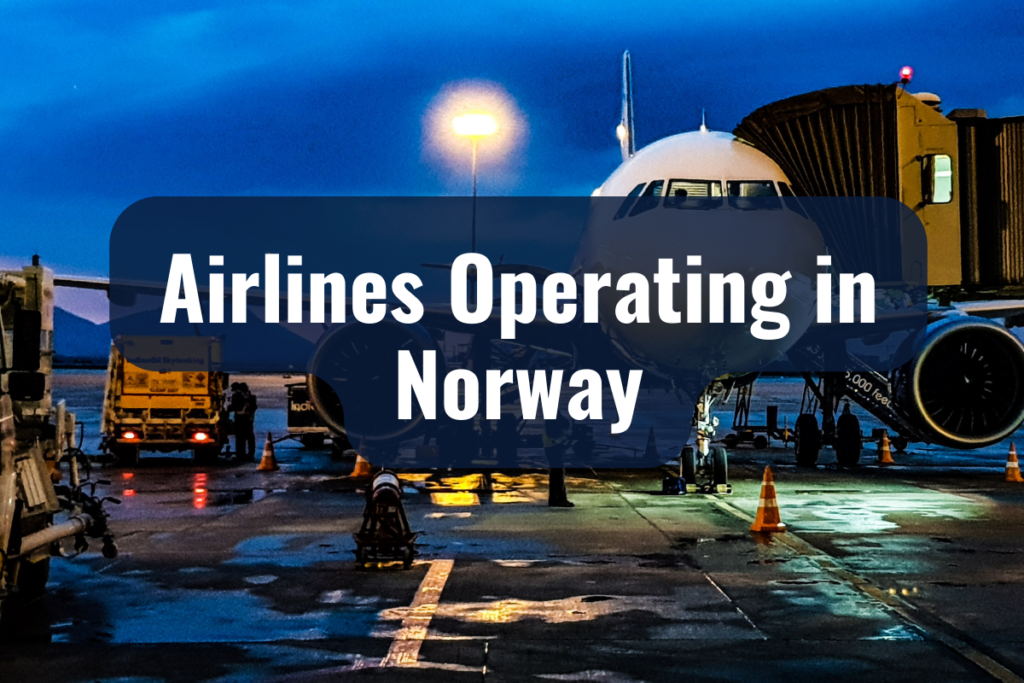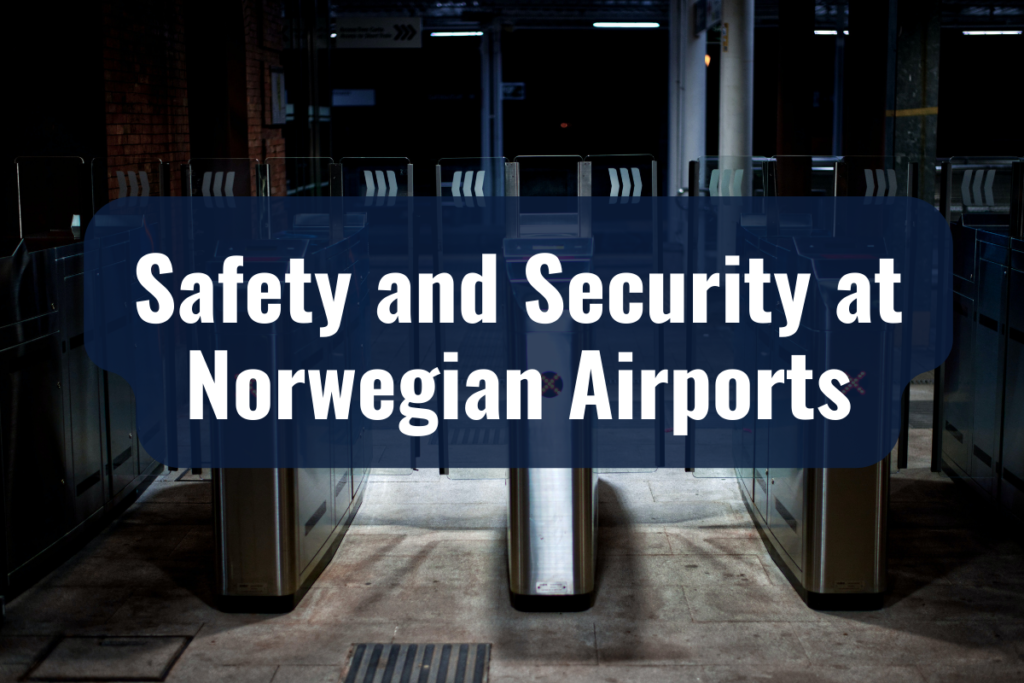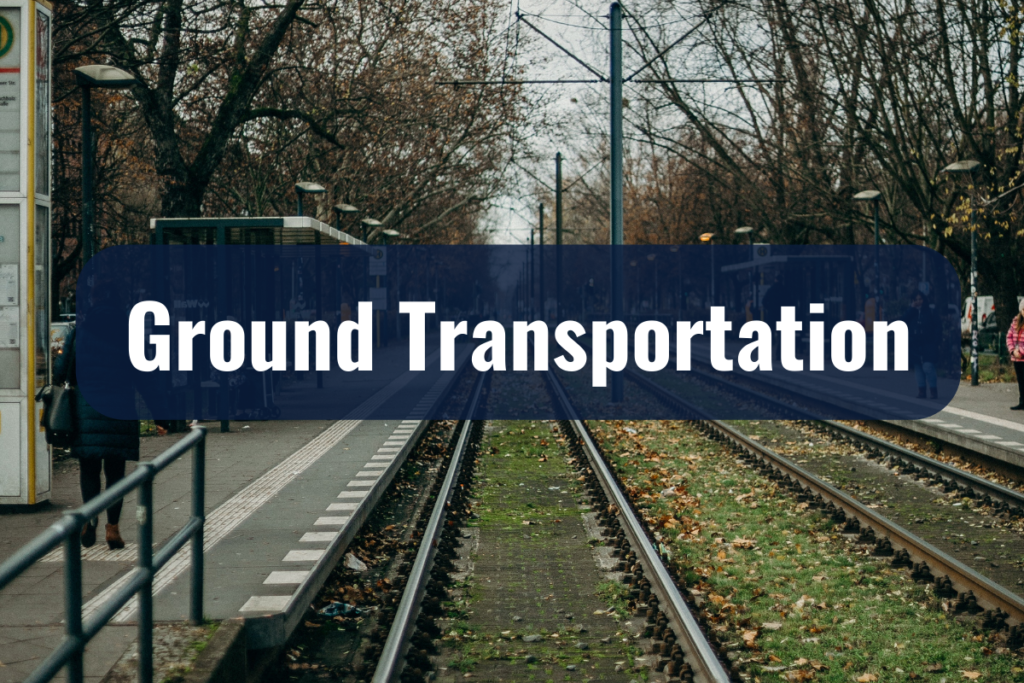Norway, with its sprawling landscapes and distant towns, relies heavily on its airports to stitch together a seamless tapestry of travel experiences. For many tourists, students, and expatriates, these airports are the first touchpoint of the Norwegian essence. Whether you’re landing in bustling Oslo or venturing northward to Arctic outposts, airports play an essential role in shaping your Norwegian narrative.
Designed with the global traveler in mind, we’ve curated information, practical tips, and travel hacks to make your passage through the airports in Norway as smooth as a Viking ship on calm waters.
Key Takeaways
- Oslo Gardermoen stands as Norway’s main international hub, with many other major airports offering extensive connections.
- Regional airports, though smaller, provide easy access to Norway’s remote beauty spots.
- Understanding the airport layout, signage, and using digital resources will ease your navigation.
- Several airlines, both domestic and international, operate in Norway ensuring wide connectivity.
- Norwegian airports prioritize safety, with stringent security measures and well-trained personnel.
Whether you’re here for a fleeting visit, embarking on a study journey, or commencing a new chapter of your life, understanding Norway’s airports can be a game-changer. So, strap in, and let’s embark on this aerial exploration together!
Major Airports in Norway

Ah, the hubs of travel magic! These major airports in Norway are not just transit points, but landmarks in their own right. Here’s an overview of the country’s principal gateways and what you can expect:
Oslo Gardermoen (OSL)
- Location and Significance: Situated just 35 km north of Oslo, Gardermoen is Norway’s largest and busiest airport. It’s the central hub for international arrivals and departures, linking Norway with numerous global destinations.
- Facilities and Services: OSL is equipped with a multitude of amenities such as duty-free shops boasting Nordic goods, a rich array of eateries, and comfortable lounges to unwind. For the art enthusiasts, the airport also occasionally hosts art exhibitions.
- Connecting to the City: The Flytoget Airport Express Train whisks travelers to central Oslo in a mere 20 minutes. If you prefer road journeys, airport buses and taxis are readily available. Travel tip: If you have some time to spare, take a moment to admire the stunning architecture of the airport, inspired by Norway’s natural landscapes.
Bergen Flesland (BGO)
- Location and Significance: Nestled approximately 20 km from the heart of Bergen, Flesland Airport is the gateway to Norway’s western coast. It serves as the main point of entry for those yearning to explore the UNESCO World Heritage site of Bryggen and the surrounding fjords.
- Facilities and Services: Expect a blend of modernity and comfort with shops offering local crafts, diverse culinary delights, and cozy resting spots. The airport is relatively smaller than OSL but is efficient and traveler-friendly.
- Traveling to/from Bergen: The Bergen Light Rail, known locally as Bybanen, offers a scenic and efficient ride to the city. Buses and taxis are also at your service. A quick tip: Check out the panoramic views from the airport’s upper levels – they’re Instagram-worthy!
Stavanger Sola (SVG)
- Location and Insight: Located 14 km from Stavanger city center, Sola Airport is the heartbeat of the oil-rich region. It’s also the perfect starting point for ventures to the Pulpit Rock.
- Facilities and Offerings: Modern lounges, duty-free shopping zones with a Norwegian touch, and a variety of eateries make waiting at SVG a pleasant experience.
- Tips for Transportation: Regular buses link the airport to Stavanger, and taxis are easily accessible. If you’re in no rush, gazing at the North Sea from the airport’s vicinity is a calming pursuit.
Trondheim Værnes (TRD)
- Location and Its Importance: Positioned 35 km from Trondheim’s core, Værnes is a vital link to central Norway. It offers a glimpse of the country’s ancient roots, with the Nidaros Cathedral being a notable attraction.
- Amenities and Services: A harmonious blend of history and contemporary design, TRD offers shopping options, food joints spanning international cuisines, and relaxation spots.
- Getting to and from Trondheim: Trains and buses are the main connectors, providing an affordable and picturesque transition from the airport to the city. If you fancy, taxis offer a quicker alternative.
Regional and Smaller Airports
Beyond the bustling halls of Norway’s major airports lie the unsung heroes of its aviation realm: regional and smaller airports. While they might not have the sprawling complexes of their bigger counterparts, their charm, convenience, and unique offerings make them indispensable for any traveler eager to explore the nooks and crannies of this stunning country.
The Importance of Regional Airports
Norway is a vast nation with a diverse topography. From the serene fjords in the west to the rugged northern landscapes, there’s much to see. Regional airports are the lifelines that make many of these remote and enchanting locales accessible.
Notable Regional Airports
| Tromsø (TOS) | Location: The Arctic gateway! Tromsø Airport lies just outside the city, serving as a bridge to Northern Norway and the mesmerizing sights of the polar nights and midnight sun. Tips: Due to its northern location, flights may be affected by weather. Always check forecasts and be prepared for potential delays. Don’t forget to catch a glimpse of the Northern Lights if you’re visiting in winter! |
| Bodø (BOO) | Location: Strategically positioned in Nordland county, Bodø Airport is the portal to the Lofoten Islands and the magnificent Saltstraumen maelstrom. Traveler’s Note: It’s a great hub for adventurers wanting to explore the northern wilderness. Also, the coastal vistas near the airport are simply breathtaking! |
| Kristiansand Kjevik (KRS) | Location: Located in the southernmost part of Norway, Kjevik is the key to the coastal city of Kristiansand and its beautiful archipelago. Tips: If you’re traveling during summer, make sure to visit the nearby beaches. The airport’s compact nature also means quicker boarding and deplaning – a boon for those in a hurry! |
| Molde Årø (MOL) | Location: A gem in the Romsdal region, this airport is the door to the jazz city of Molde and its panoramic mountain views. Must-do: If your visit aligns with the Molde International Jazz Festival, the city comes alive with rhythm and melody. A musical treat not to be missed! |
Here’s where the intimate Norwegian experience truly comes to life. Less crowded, often nestled amidst nature, these airports might have limited amenities but compensate with personal touch and swift services.
Here’s some quick tips:
- Language: While major airports have many English speakers, at smaller airports, having a translation app might come in handy.
- Connectivity: Ground transport may be less frequent, so plan your onwards journey in advance.
- Snacking: Limited eateries mean it’s wise to pack some snacks if you’ve got a longer wait or layover.
Airlines Operating in Norway

From international juggernauts to regional carriers, these airlines ensure you are seamlessly connected, whether you’re touching down in vibrant cities or exploring enchanting, remote corners.
- Overview: As the flag carrier of Norway (as well as Denmark and Sweden), SAS is the major airline you’ll encounter. It offers extensive domestic and international connections.
- Services & Routes: Whether you’re flying in from the U.S., Asia, or elsewhere in Europe, SAS has you covered. Within Norway, it connects major cities and many regional destinations.
- Traveler’s Tip: SAS often offers special deals, especially for youth and students under the age of 26. Keep an eye out!
Norwegian Air Shuttle:
- Overview: Known commonly as Norwegian, this low-cost carrier has grown exponentially and is now one of Europe’s largest airlines.
- Services & Routes: While it began as a domestic carrier, Norwegian now boasts an impressive array of international destinations. Despite its budget label, the airline offers modern amenities like free Wi-Fi on most flights.
- Booking Hacks: As a budget airline, prices can fluctuate. For the best deals, try booking during their sale periods and always check prices across multiple days.
Widerøe:
- Overview: Meet the backbone of regional aviation in Norway. Widerøe, with its trusty fleet of turboprop aircraft, is Europe’s largest regional airline.
- Services & Routes: It specializes in connecting smaller towns and cities in Norway, making it the go-to option for travelers looking to venture beyond the usual hotspots. It also serves some international routes, mainly to neighboring countries.
- Must-Know: For those eager to see as much of Norway as possible, Widerøe offers an “Explore Norway Ticket”, an unlimited travel pass around the country for a fixed period.
Other International Carriers
Various global airlines connect Norway to the world. Whether you’re flying with Lufthansa, British Airways, KLM, or any other major international airline, they predominantly serve the main airports like Oslo Gardermoen and Bergen Flesland.
- Charter Flights: Especially during the holiday season, several charter operators offer direct flights to tourist hotspots like the Canary Islands, the Mediterranean, and beyond.
- Loyalty Programs: Many of these airlines offer frequent flyer programs. If you plan on visiting Norway multiple times or touring Scandinavia extensively, consider joining these programs for perks and rewards.
- Seasonal Deals: Airlines often roll out special promotions during festivals or off-peak seasons. Subscribing to newsletters or setting up fare alerts can save you a tidy sum.
- Environmentally Conscious: Norway’s commitment to sustainability also touches the skies. Airlines like SAS and Norwegian have initiatives to reduce carbon emissions, so you can fly with a lighter heart.

Ah, the adventure of traveling in a new country! But, as with any journey, it’s always the little tips and hacks that can transform a trip from good to great. Navigating Norwegian airports, with their unique blend of Nordic efficiency and charm, is no exception. So, whether you’re an eager student, a wandering tourist, or an expat setting up home, these essential pointers will ensure your airport experience in Norway is as smooth as a fjord’s reflection at dawn.
- Embrace the Digital Age
- Mobile Apps: Most Norwegian airports, especially the major ones, have user-friendly mobile apps. These apps provide real-time flight updates, airport maps, and even retail and dining options.
- Wi-Fi Access: Almost all Norwegian airports offer free Wi-Fi. It’s generally speedy and requires a simple registration or connection process.
- Public Transport is King
- Most airports are well-connected to their respective city centers through a network of trains, buses, or trams. They’re punctual, clean, and often less expensive than taxis. Plus, the views from a train or bus can be a treat in themselves!
- Mastering the Language
- Though Norwegian is the official language, airport signs are often bilingual, with English being the second language. Additionally, airport staff are usually fluent in English, so don’t hesitate to ask questions if you’re in doubt.
- Cash or Card?
- Norway is swiftly moving towards becoming a cashless society. While cash is accepted, card payments are more common. ATMs and currency exchange counters are available, but it’s a good idea to have a functional credit or debit card with you. Remember to inform your bank about your travel dates to avoid any transaction issues.
- Nature’s Call
- Norwegian airports, in line with the country’s environmental values, emphasize sustainability. This is reflected in their architecture, use of renewable energy, and waste management. Do your bit by recycling and minimizing waste.
- Weather Watch
- Particularly during winter months, Norway can experience severe weather, leading to flight delays or cancellations. Always keep a tab on the weather forecast and possibly plan some buffer time, especially if you have tight connections.
- Duty-Free Delights
- Norwegian airports, especially the larger ones, have a rich array of duty-free shopping options. It’s a fantastic opportunity to grab some local treats, from gourmet chocolates to world-famous Nordic knitwear.
- Relax and Recharge
- Many Norwegian airports offer comfortable lounges, relaxation zones, and even sleep pods. If you have a long layover, these amenities can be a boon.
- Safety First
- Like the rest of the country, Norwegian airports are incredibly safe. However, it’s always wise to keep an eye on your belongings and be aware of your surroundings.
- Cultural Glimpses
- Some airports, like Oslo Gardermoen, host art exhibitions and cultural displays. Take a moment to explore these – they offer a wonderful introduction to Norway’s rich cultural tapestry.
Safety and Security at Norwegian Airports

When you think of Norway, thoughts of majestic fjords, northern lights, and perhaps a friendly troll or two from folklore might come to mind. However, when it comes to safety and security at Norwegian airports, the approach is as serious and meticulous as any other aspect of Norwegian life. Here’s what you should know to ensure that your journey through Norwegian skies remains serene and secure.
World-Class Safety Standards. Norwegian airports adhere to international safety and security protocols. Regular audits and checks ensure that they remain at the forefront of safety practices worldwide.
Security Checks. Like many other global airports, Norwegian airports require passengers to undergo security screening. This includes standard procedures like luggage X-rays, metal detectors, and sometimes random checks. Always keep your travel documents handy, and be prepared to show them when requested.
Clear Signage. Directional and informational signs in the airport are crystal clear and are usually available in both Norwegian and English. These not only guide you to your gate but also to emergency exits and medical facilities if required.
Lost & Found. Misplaced something? Norwegian airports have efficient lost-and-found systems. If you happen to leave an item at security or anywhere else, approach the airport’s lost-and-found department, and they’ll do their best to assist you.
Stay Alert. While Norway’s crime rates are notably low, and its airports are amongst the safest, it’s always a good practice to be aware of your surroundings and keep an eye on your belongings.
Health and Medical. In light of global health concerns, Norwegian airports have stepped up their health and hygiene measures. Expect to find sanitizing stations at multiple points. Some airports might also have thermal scanners in place. Moreover, if you or someone you know feels unwell, there are medical facilities and trained personnel available to assist.
In Case of Emergency. Norwegian airports are equipped with modern emergency response systems. Fire safety, medical emergencies, and other contingencies are well-prepared for. In any situation, always listen to airport staff and follow their instructions.
Considerate Behavior. Norway values societal respect and considerate behavior. At airports, this translates into forming orderly queues, respecting personal space, and being polite. Demonstrating these qualities will ensure a harmonious environment for everyone.
Stay Updated. For real-time updates on safety, security, and other airport-related matters, consider following the airport’s official website or social media channels. They provide timely information, especially during weather-related or other unforeseen disruptions.
Feedback Matters. Norwegian airports value passenger feedback. If you notice something amiss or have a suggestion for improvement, don’t hesitate to share. There are usually feedback stations or online platforms where you can communicate your thoughts.
Ground Transportation: Smooth Transitions from Sky to Land

Setting foot in a Norwegian airport is just the beginning of your Scandinavian escapade. The real adventure commences as you journey onward, from bustling city centers to quaint countryside. Fear not, for Norway’s ground transportation is a harmonious blend of efficiency, comfort, and those ever-present scenic views. Whether you’re a student on a budget or a traveler seeking luxury, Norway’s transportation palette has a hue for you.
Key Feature: Speed and efficiency. Most major airports, especially Oslo Gardermoen, are connected by a high-speed train service. These airport express trains (Flytoget in Oslo) will whisk you to the city center in no time. Some cities also offer tram services for closer destinations. Tip: If you’re staying in Norway for a while, consider getting a travel card or a multi-trip ticket for added savings.
Key Feature: Comprehensive coverage. Airport buses are an economical and effective way to reach various parts of the city and even some neighboring towns. They are especially handy if your destination isn’t directly served by a train or tram. Traveler’s Note: Look for “Flybussen” or “Flybussekspressen” – these are common airport bus services with frequent routes.
Key Feature: Personalized and direct. Taxis are available at every airport. They provide door-to-door service but are generally more expensive than public transport. Safety First: Always choose official taxis from designated stands to ensure regulated pricing and safety.
Key Feature: Freedom to explore. If you’re the adventurous type or plan on visiting off-the-beaten-path locations, renting a car might be ideal. Major international and local car rental agencies have desks at most airports. Pro Tip: Ensure you’re familiar with Norwegian driving laws. And remember, in this land of tunnels and bridges, always keep some spare change or a card ready for tolls!
Key Feature: Eco-friendly city exploration. Several Norwegian cities have embraced sustainable transport. Upon arrival, consider renting a bicycle or an e-scooter for short distances. They’re a fun way to see the city and are environmentally friendly. Reminder: Always wear a helmet and follow local traffic rules for a safe ride.
Key Feature: Picturesque journeys. If you’re landing in coastal cities like Bergen or Stavanger, ferries can be a delightful mode of transport, connecting you to nearby islands or fjord-side villages. Must-Experience: Even if you don’t have a specific destination in mind, a ferry ride can offer spectacular views of the Norwegian coastline.
Unsure of which transport to choose? Make use of the plethora of travel apps available, like Ruter, Vy, or Entur, to plan your journey. Additionally, airport information desks can provide guidance on the best routes and modes of transportation tailored to your needs.
Traveling through Norway is more than just moving from point A to B; it’s an integral part of the experience. With each mode of transport offering its unique perspective, you’re not just traveling; you’re immersing.
Special Needs and Assistance: Ensuring an Inclusive Travel Experience
In Norway, the belief is strong that the beauty of the nation should be accessible to everyone, regardless of physical or other limitations. This egalitarian approach shines through in the services provided at Norwegian airports for those with special needs. If you, or someone you’re traveling with, require assistance, rest assured that Norwegian airports are equipped to provide a comfortable and dignified experience.
| Pre-Arrival Communication | Tailored assistance. If you anticipate needing special assistance, it’s advisable to inform your airline at least 48 hours inThis will allow the airport staff to prepare and provide a seamless service upon your arrival. |
| Dedicated Assistance Points | Easy accessibility. Norwegian airports have designated points where travelers with special needs can request assistance. These points are clearly marked, conveniently located, and are typically near entrances, check-in desks, or public transportation stops. |
| Mobility Assistance | Hassle-free movement. Whether you need a wheelchair, an electric cart, or personal assistance navigating the airport, services are in place to assist. Ramps, elevators, and specially designed restroom facilities also ensure mobility challenges are well-addressed. |
| Visual and Hearing Impairments | Comprehensive communication. For travelers with visual or hearing impairments, airports in Norway provide tactile paths, visual information screens, and hearing loops. Additionally, personnel are trained to communicate effectively with passengers who have sensory impairments. |
| Service Animals | Your furry/four-legged assistant is welcome. Guide dogs or other certified service animals accompanying persons with disabilities are generally allowed in Norwegian airports. Ensure you have the necessary documentation and that you’ve informed your airline in advance. |
| Quiet Rooms and Sensory Spaces | Tranquility amidst the hustle. Recognizing the needs of individuals, especially children, with sensory processing concerns, some Norwegian airports offer quiet rooms. These spaces are designed to be a calming retreat from the bustling airport environment. |
| Accessible Restrooms and Nursing Rooms | Privacy and care. Apart from standard accessible restrooms, some airports also offer nursing rooms for parents and caregivers, ensuring privacy and comfort. |
| Assistance for the Elderly | Respectful care. Age is just a number in Norway. Elderly passengers can request assistance to ensure a smooth journey through the airport, be it with baggage, boarding, or simply moving from one point to another. |
| Information and Support Staff | Always there to help. Should you have any queries or require immediate assistance, dedicated support staff are available. They’re easily identifiable by their uniforms and are trained to offer aid with kindness and professionalism. |
Travel should be a joy, a door to exploration that’s open to everyone. And in Norwegian airports, they’ve taken strides to ensure that door is as wide and welcoming as possible. No matter your needs or challenges, the spirit of Norwegian hospitality ensures that your journey begins and ends on a positive note. As the Norwegians often say, “Alle skal med!” – “Everyone shall join!” So, embark with confidence, knowing that in Norway, you’re truly cared for.
Additional Resources
- Avinor : manages most of the airports in Norway
- Oslo Airport : Oslo airport information
- Bergen Airport : Bergen airport information
- Visit Norway : Destination guides, local events, and general travel advice
- Internations : First-hand experiences, local tips, housing, and event information
- Norwegian Directorate for Civil Protection (DSB) : Travel advisories, health, and safety guidelines
- Duolingo : For learning Norwegian language basics
- Culture Crossing’s Norway Guide : For cross-cultural etiquette
- Norwegian Directorate for Children, Youth, and Family Affairs (Bufdir): Information about services, rights, and contacts for persons with disabilities traveling in Norway


